- News
- Reviews
- Bikes
- Accessories
- Accessories - misc
- Computer mounts
- Bags
- Bar ends
- Bike bags & cases
- Bottle cages
- Bottles
- Cameras
- Car racks
- Child seats
- Computers
- Glasses
- GPS units
- Helmets
- Lights - front
- Lights - rear
- Lights - sets
- Locks
- Mirrors
- Mudguards
- Racks
- Pumps & CO2 inflators
- Puncture kits
- Reflectives
- Smart watches
- Stands and racks
- Trailers
- Clothing
- Components
- Bar tape & grips
- Bottom brackets
- Brake & gear cables
- Brake & STI levers
- Brake pads & spares
- Brakes
- Cassettes & freewheels
- Chains
- Chainsets & chainrings
- Derailleurs - front
- Derailleurs - rear
- Forks
- Gear levers & shifters
- Groupsets
- Handlebars & extensions
- Headsets
- Hubs
- Inner tubes
- Pedals
- Quick releases & skewers
- Saddles
- Seatposts
- Stems
- Wheels
- Tyres
- Health, fitness and nutrition
- Tools and workshop
- Miscellaneous
- Cross country mountain bikes
- Tubeless valves
- Buyers Guides
- Features
- Forum
- Recommends
- Podcast
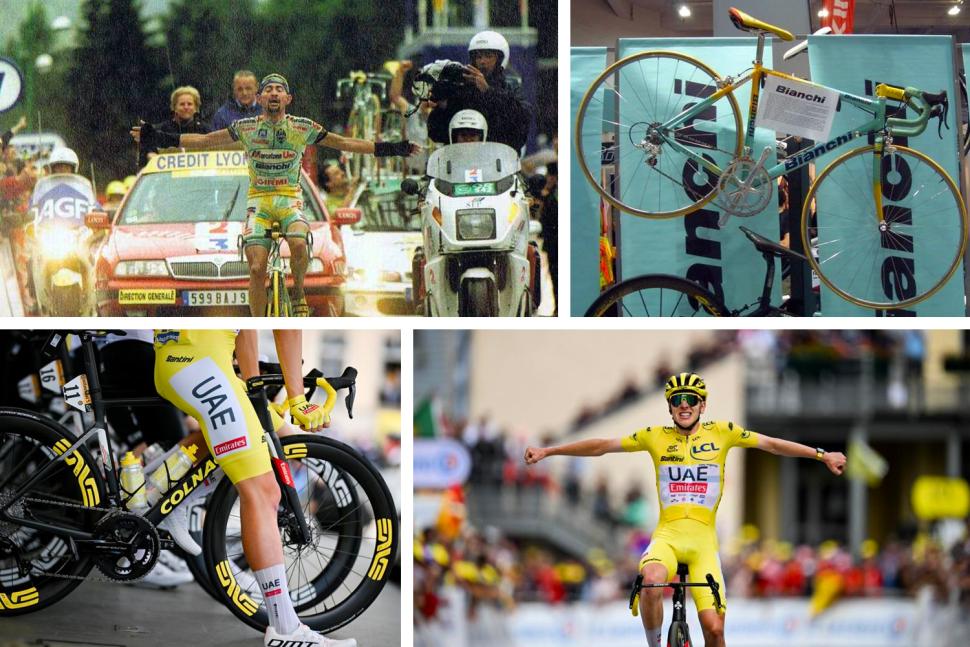 The Tour de France bikes that won on the Plateau de Beille in 1998 and 2024 - July 2024
The Tour de France bikes that won on the Plateau de Beille in 1998 and 2024 - July 2024Comparing the Tour de France bikes that won on the Plateau de Beille in 1998 and 2024: Marco Pantani's Bianchi Mega Pro XL vs Tadej Pogačar's Colnago V4Rs
Yesterday's Tour de France stage 15 saw Tadej Pogačar produce another convincing victory, this time on the legendary Plateau de Beille that Marco Pantani triumphed on way back in 1998. In the process, the Slovenian destroyed the record time for ascending the 15.7km, 7.8% brute, riding it three minutes and 44 seconds faster than Il Pirata did 26 years previously.
Some are already calling Pogačar's feat the greatest climbing performance of all time... but surely the much-improved bikes and equipment the peloton are using now compared to 1998 are contributing to faster times and falling records? Not to say it's the only reason, but it's a good excuse to look at just how far bike tech has come on in the last couple of decades, anyway!
1998
Stage 11 of the 1998 Tour de France was a 170km route from Luchon to the Plateau de Beille, a brutal-by-any-standard 15km hors catégorie climb that averages 8%.
During the final ascent and on a sunny day similar to this year, Marco Pantani rode away from Jan Ullrich who was in the yellow jersey.
While Ullrich mainly sat in the saddle grinding away, Il Pirata was up the road, alternating seated riding with long and intense out-of-the-saddle efforts, his high gearing ensuring a high speed.
Hairless and helmetless, the slight but always-animated figure would pour water over his head to cool down, and while he won the stage by 1min 26 seconds over the Swiss rider Roland Meier and climbed the Plateau de Beille in a record time, by the end of the day he was still only in fourth, three minutes behind Ullrich.
But that day’s ride laid the foundations for his momentous rides in the upcoming Alpine stages, and when Pantani took stage 15 to Les Deux Alpes he rode his way into yellow, which he kept all the way to Paris.
In doing so he became one of the very few riders to win the Giro d’Italia and Tour de France in the same year, joining an elite group: Fausto Coppi, Eddy Merckx, Bernard Hinault, Stephen Roche and Miguel Indurain.
The Bianchi Mega Pro XL
Carbon? Who needs carbon? Not Marco ‘Il Pirata’ Pantani.
His 1998 Tour and Giro victories were achieved on Bianchi bikes with aluminium frames, in the material’s very brief spell of dominance between the near-century-long era of steel and today’s era of carbon fibre.
Steel was predominant from the first days of the Tour de France until 1995, when Miguel ‘Big Mig’ Indurain won on Pinarello’s steel Espada. He won the previous year on a Dario Pegoretti-welded frame that was badged as a Pinarello.
There had been occasional interruptions to steel’s hegemony, with Luis Ocaña riding a Motobecane-labelled Speedwell titanium frame to a Tour win in 1973. And then, in 1988 Pedro Delgado piloted a Pinarello-badged aluminium-lugged carbon bike made bt TVT, with Greg LeMond winning the following year on a TVT-built bike bearing the Bottecchia name.
But for three short years – 1996, 1997 and 1998 – aluminium temporarily ruled the roost, with Pantani following Bjarne Riis and Jan Ullrich to the Tour podium on alloy machines.
The frameset
Not steel. Not carbon. But a Mega Pro XL frame built especially for Pantani at Bianchi’s Italian factory. It’s made from 7000 series double-butted tubing from Dedacciai.
The 51cm frame has a very slightly sloping top tube – this was the same year Giant’s sloping top-tubed TCR debuted at the Tour – with custom geometry made specifically for Pantani.
The paint finish is of course Bianchi’s Celeste blue, the ‘color of legends and dreams’ albeit with a fade to yellow-orange at the seat tube cluster and towards the fork dropouts.
The Bianchi is skinnier in just about every way than this year’s winning bike.
The head tube is a straight one-inch diameter affair – no tapering here.
The bottom bracket looks equally slimline compared with today’s oversize designs, the Italian-threaded bottom bracket having a square-tapered spindle.
Compared with this year’s bikes where just about every component can be made from carbon, it’s virtually absent from Pantani’s bike, with the only exception the Time carbon fork – and the Campag headset’s carbon topcap. All important!
The Time Vectran carbon fork has a 1in steerer and aluminium dropouts.
The groupset
The Italian-made bike, piloted over the Alps by an Italian rider, is of course decked out with an Italian groupset from Campagnolo – shockingly absent from this year’s Tour.
The nine-speed (nine!) Campagnolo Record groupset has 170mm cranks, which these days seems excessive for a rider just 1.72m tall, and by the standards of a regular cyclist his bike was massively overgeared!
The 54/44 chainrings are paired with an absurdly close 11-23 sprocket cluster, which suited Pantani’s aggressive climbing style. The gear range tops out at 128in but the bottom gear is a massive 50in, roughly equivalent to a 34x18 pairing. Absurd!
And while there was no carbon in the groupset, there was some exotica in the shape of titanium sprockets, presumably to trim a few grams.
Another touch to shed some weight is that Pantani preferred to ride with a down tube shifter on the left-hand side, with the relevant ‘brifter’ lever losing its gear-shifting internals.
Braking? Well, there’s no comparison between this year’s hydraulic discs and the stoppers that Pantani had to put up with. The Campagnolo single-pivot brakes will be lighter than today’s hydraulics, but their performance will be vastly inferior. Cue arguments…
Wheelset
During that years Giro Pantani’s Mercatone Uno team used Campagnolo Shamal wheels, a name that still exists in Campag’s range, though that era’s Shamals had aluminium rims and were designed for rim brakes.
For the Tour de France’s mountain stages, Mercatone Uno’s riders, including Pantani, used Campag’s lightweight Electron wheel with shallower box-profile aluminium rims. Both wheels featured 24 stainless steel spokes and came with brass nipples, which is slightly surprising given the efforts made to reduce weight.
That said, even with brass nipples being three times the weight of an aluminium nipple, the weight difference for both sets of wheels would only have been around 24g, which may have been considered a weight worth paying for the extra durability and resistance to corrosion. The fact that team mechanics service wheels on a daily basis may also have been taken into account here.
There are no surprises when it comes to the tyres, with that year’s bikes having tubulars or tubulars. Take your pick. These were Vittoria Corsas in a typical-for-the-time 21c width, and the Corsa has stood the test of time and is still going strong.
Pantani rode on yellow tubs while other team riders would be riding on either yellow or green.
> Have we witnessed the death of tubular tyres?
Should you fancy following in Pantani’s wheel tracks you can still buy a pair of Electrons at the time of writing, but the lightweight hoops do come with a heavyweight 999 euro price, and have clincher rather than tubular rims.
Extras
Power meters, GPS computers. None of that tech for Pantani.
He used an Echowell computer in red carbon mounted to the right of his stem, and this was linked to a sensor on the right fork leg by a cable (yes, wire!) snaking around the front brake cable. “Another time, another time” as Harold Pinter wrote about cricket…
And to my slight surprise, the Taiwanese company Echowell is still going, making a wide range of e-bike and bike (including wired ones) as well as heart rate monitors.
Pantani rode with only one bottle cage, on the bike’s down tube, though there are some questions on whether his 1988 Tour-winning bike had a titanium or stainless steel Ciussi from the Italian company Elite. You can still buy the classic-looking cage in stainless steel, which Elite calls ‘the original’.
One of the advantages of being the undoubted team leader is that you have domestiques to carry your bidons.
And if you want to go the whole hog, you can even buy original NOS 1998 Coca Cola bottles for ‘just’ 51.60 euros! Put me down for two…
It’s pretty much Italian everywhere else.
The titanium seatpost is from ITM, as are the stem and bar. The Big One aluminium stem is a threadless two-bolt design, and it’s matched with the same company’s Super Italia Pro 260, with a traditional rather than ergonomic bend and low hoods, designed for Pantani’s riding style.
You can still buy a new old stock (NOS) Big One stem on eBay, including in yellow (that the seller calls gold), for 58.8 euros.
The bar is quite widely available on eBay and elsewhere.
The pedals are an exception to the largely Italian – and lightweight – theme. The French company Time’s Equipe Pro Magnesium pedals weighed around 400g, which seems very heavy these days.
And NOS versions are yours on eBay if you’re prepared to stump up $399!
One final touch is the distinctive Selle Italia ‘Pirata’ saddle, complete with pirate caricature. Even a used one costs as much as £350, so your replica bike is starting to look very expensive.
The weight
It’s hard to know exactly but it’s reckoned that Pantani’s Bianchi weighed in at just 6.96kg – but that’s thought to include the weighty pedals and the bottle cage.
With the Time pedals accounting for 400g and the Ciussi cage another 48g or so, we’re talking a weight of just 6.512kg if you used the criteria most bike manufacturers use these days, which would be light even in 2024.
This compares with a weight of over 7kg for Pogačar’s 2024 Colnago, and puts it on a par with the c6.9kg Cervélo R5 that Jonas Vingegaard rode during last year’s Tour.
It’s worth mentioning, however, that the UCI introduced its controversial 6.8kg minimum weight limit back in 2000, so while it is possible to build a bike much lighter than 6.8kg, we’re unlikely to see them in the Tour any time soon.
Pantani's 1998 Bianchi Mega Pro XL: full specification
Weight: c6.96kg including pedals and bottom cage (51cm custom)
Frame: Custom-made Bianchi Mega XL Pro constructed from double-butted 7000-series Dedacciai aluminium
Fork: Time Vectran carbon with 1in steerer and aluminium dropouts
Chainset: Campagnolo Record 54/44, 170mm cranks
Cassette: Campagnolo Record 11-23
Bottom bracket: Campagnolo Record, Italian thread
Front derailleur: Campagnolo Record
Rear derailleur: Campagnolo Record titanium 9-speed
Levers: Campagnolo Record 9-speed with left-hand down tube shifter for the front mech
Brakes: Campagnolo Record single-pivot
Stem: ITM Big One, aluminum
Handlebar: ITM Super Italia Pro 260, aluminium
Wheels: Campagnolo Electron tubular rims, 24 spokes, Campagnolo Record hubs
Tyres: Vittoria Corsa CX TT tubular, 21mm
Seatpost: PMP titanium
Seatpost clamp: PMP titanium
Saddle: Selle Italia Flite Titanium Marco Pantani
Pedals: Time Magnesium Equipe Pro
Computer: Echowell red carbon
Bottle cage: Elite Ciussi
2024
This year’s stage 15 was a super-tough 197km affair ending in the brutal ascent of the 1,780m Plateau de Beille, taking in the Col de Peyresourde and Col de Portet-d’Aspet en route. All under a bright, punishing sun, not that the conditions prevented an exciting day of riding.
For around 5km Denmark’s Jonas Vingegaard has the Slovenian rider Tadej Pogačar glued to his back wheel on the Plateau de Beille, but with 5.4km to the Dane looks around, Pogačar shoots past him on a steep section and Vingegaard never sees him again.
It was astonishing feat, beating Pantani’s record time by a whopping three minutes and 44 seconds, and arguably the greatest climb in history.
Vingegaard was riding a Cervélo S5 with SRAM Red and Pog was on a Colnago V4Rs with Shimano Dura-Ace, and it was the latter bike and groupset that took the honours, and will probably propel Pogačar to the yellow jersey in Paris – for a Pantani-like Giro-Tour double – but with Covid in the peloton and the Alps still ahead, I’m not nipping down the bookies to bet against him just yet...
The frameset
Aluminium? Who are you kidding? Skinny main frame tubes? Not in 2024. No way.
It’s carbon fibre and gib, bulky frame tube’s all the way for this year’s stage 15-winning bike, though the 2024 machine is also from one of the storied Italian brands: Colnago. A company with 63 world championships in its palmarès, as well as 41 Monuments and 23 Grand Tours.
Possibly soon to become 24.
It’s a bike we’ve reviewed too, Stu liking it for just about everything save for its then £12,599 price for the build we got our hands on.
Colnago goes big on the bike-designer’s bingo in describing the V4Rs: ‘Improved stiffness, better aerodynamics, weight decrease.’ House!
The looks are actually slightly less radical than on some of the 2024 peloton’s other bikes, but it’s clearly not holding ‘Pog’ back.
This year’s V4Rs is claimed to weigh 795g in a 50s frame, unpainted of course, and Colnago says it conceived the V4Rs as ‘a fully integrated system’, taking into account both weight and aerodynamics.
The V4Rs is the successor to the V3Rs on which Pogačar won the 2021 Tour, and it’s lighter too – albeit by an insignificant 12g. The bigger gains are in aerodynamics, with Colnago claiming the new model will save you the equivalent of the 17.5 watts over the V3Rs at 50km/h (I’d need a descent for that…) at a cadence of 90rpm, which mean you could hit the same speed while putting out 17.5 watts less power – a pretty impressive difference.
There are other changes too. While bottom bracket stiffness is the same as the V3Rs, head tube stiffness is claimed to be 5-10% lower, which seems to be bucking modern trends!
But what Colnago calls ‘real dynamic stiffness’ is increased in both sprinting and seated positions, by 4% and 5% respectively.
The groupset
Campagnolo 9-speed has long been superseded by groupsets with 12 ratios, which is what this year’s bike is specced with. But perhaps most surprisingly of all, this year’s peloton doesn’t feature one bike sporting Campagnolo kit. It’s arrivederci Campag, as fans of all things Italian shed tears into their tiny espressos!
As recently as 2020 and 2021 Campagnolo-equipped bikes were being ridden to victory by Pogačar, the 2020 V3RS still having rim brakes. Another time…
The battle for the stage this year is being fought between Japan’s Shimano that supplies 18 teams and the multi-national SRAM, which decks out the other four teams.
Shimano’s top-tier Dura-Ace Di2 is a 12-speed electronic setup while Red AXS is SRAM’s 12-speed wireless groupset.
Liam raved about Dura-Ace Di2 when it first went to 12 ratios in 2021, while Stu was just as positive about SRAM Red AXS when he tested it a couple of months ago.
So it really is a case of horses for courses.
But while Dura-Ace Di2 is at the heart of things, there are quite a few deviations here and there.
CarbonTi provides its X-CarboRing EVO chainrings in a pairing that most of us might struggle on, especially up a hors catégorie Pyrenean col. Yep, we’re talking a 55/40 combo that’s paired with a more familiar Dura-Ace 11-34 cassette. This gives a higher top gear and a much lower bottom than Pantani was riding on.
A less obvious contrast from Pantani’s bike is that the Colnago has considerably shorter cranks – 165mm compared with 170mm – in spite of Pogačar being a fair bit taller than Pantani. This is quite a recent trend and something Mike Burrows was a big fan of.
> Are shorter cranks better for your bike?
And while the hydraulic disc brakes are part of the Dura-Ace groupset they’ve been tricked up to the nth degree.
The rotors are Carbon-Ti’s super-swish-looking X-Rotor SteelCarbon 3s, with a 160mm front rotor and 140mm rear.
But the tricking out doesn’t end there, as the rotors are stopped by AbsoluteBlack’s Graphenpads, which AbsoluteBlack describes as the ‘world’s best disc brake pads’. Well, as the quote goes, ‘they would say that, wouldn’t they?’!
Claimed weight is 16g per set and an extra 1g for the spring.
Perhaps more significantly, AbsoluteBlack isn’t a UAE Team Emirates sponsor, so the team has to pay for them.
They use a ceramic-organic friction compound using graphene and they feature striking-looking cooling fins, and AbsoluteBlack say’s it’s the cooling ability of these fins that make the difference.
Wheels
Back in the day – well, in 1998 – wheels took their cues from super-models, espousing low weight and skinniness over all other factors.
This generation of wheels and tyres is more of a plus-size affair, with fatter tyres and wider rims. After all, as our 'why wider tyres on road bikes are here to stay' feature shows, wider rubber is not only more comfortable, it’s also mostly faster.
From the 21mm tyres of Il Pirata’s days, we’ve gone to 25-26mm tyres in 2018, and in 2024 you’d be hard pressed to find a tyre narrower than 28mm in the pro peloton.
Rims are also a world away from the narrow box-section aluminium rims that Pantani rode on. Think wide, think carbon, think 50+mm-deep rim, think aero.
And you’ll have Enve’s SES 4.5 Disc wheels – though Pogačar also rides on the same wheels with shallower rims for some mountain stages, but apparently not for this one. The 4.5s have a 50mm-deep front rim and 56mm-deep rear.
Their 25mm internal rim width is wider than the overall width of the tubs Pantani rode on, and the external rim width is a mighty 32mm – both of these figures would have been unheard of in the Pirate’s days.
One thing they do have in common, though, is that both eras’ wheels have 24 spokes, Sapim CX-Rays in the case of the Enves. Weight is a claimed 1,452g per pair with an Enve hub and XDR driver. This compares with the 1600g claimed weight of the Electrons, making the Enves both lighter – useful on steep Pyrenean climbs and on flatter surfaces and descents when aerodynamics come into play.
> Lightweight v Aero: which is best?
The tyres are a world apart too.
Tubular tyres – or tubs – dominated pro-level cycling for the best part of a century, but the last few years have seen them challenged by both clinchers and tubeless tyres, and it’s the latter that Pog was riding on yesterday.
The Continental Grand Prix 5000 S TR tyres are fast, grippy, robust and high-quality tyres, as Jamie discovered when he reviewed them. And while Jamie discovered them a pig to fit, Pogačar has mechanics to do that for him.
The 28mm tyre will likely inflate to a little more than 30mm when mounted on the super-wide Enve rims.
Extras
While SRM power meters have been available since the 1980s, there was no power meter for Pantani on the Plateau de Beille. And no GPS, either, though we guess he knew where he was.
Pogačar’s bike comes with Shimano’s crank-based power meter, which is wirelessly connected to the Wahoo Elemnt Bolt V2.
The amount of information that Pogačar has available to him is vastly more than Pantani could have had, though you wonder how much he would have used it – and how much Pogačar uses it. He looks like he rides on emotion and feel, rather than how many watts he can put out at any one point.
And in fact, there have been races in the past where that has been exactly the case.
One of the few common factors between Pantani and Pogačar’s bikes are that Elite supplied the cage – or cages in Pog’s case, the Colnago getting a pair of Elite’s Leggero Carbon cages.
These weight a minimal 17g each, so even the pair of them would be around 14g lighter than Pantani’s Ciussi. Another advantage of carbon over steel.
Pogačar was riding on a ProLogo saddle with Nack carbon rails.
Weight
Perhaps surprisingly – or possibly not given how crucial aerodynamics are – Pogačar’s bike is a little heavier than Pantani’s 6.96kg Bianchi, and than the Colnago V3Rs Pogačar rode to victory in 2020, though that had rim brakes.
His Colnago V4Rs weighs around 7.3kg including pedals.
If he wanted to he could have trimmed a little fat, dropping down to Enve’s shallower SES 2.3 wheels and 25mm Conti tyres, but even then it wouldn’t have challenged the UCI’s weight limit.
Pogačar’s Colnago V4Rs: full specification
Weight: c7.3kg 48.5cm
Frame: Colnago V4Rs
Fork: Colnago V4Rs
Chainset: Shimano Dura-Ace Di2 with power meter cranks, Carbon-Ti 55/40 chainrings, 165mm
Cassette: Shimano Dura-Ace Di2 11-34
Bottom bracket: Bikeone PowerSet T47 bottom bracket with ceramic bearings
Front derailleur: Shimano Dura-Ace Di2
Rear derailleur: Shimano Dura-Ace Di2
Levers: Shimano Dura-Ace Di2
Brakes: Shimano Dura-Ace Di2 hydraulic disc, Carbon-Ti X-Rotor SteelCarbon 3s discs, 160mm front, 140mm rear
Handlebar/stem: Enve one-piece, 37cm bar, 120mm stem
Wheels: Enve SES 4.5, 24 Sapim CX-Ray spokes front and rear
Tyres: 28mm Continental Grand Prix 5000 S TR
Seatpost: Colnago carbon
Seatpost clamp: Colnago integrated
Saddle: Prologo Nago 04 147
Pedals: Shimano’s Dura-Ace PD-R9100 SPD-SL
Computer: Wahoo Elemnt Bolt V2
Bottle cages: Elite Leggero Carbon
1998 or 2024? Let us know which bike you prefer in the comments as always
Simon has been riding since he was a nipper and more seriously since his university days way back when. He has been a cycling journalist for more than two decades and reckons he has upwards of 200,000 miles in his legs. In his time he has competed (in the loosest sense of the word) in time trials, triathlons, duathlons and a lone cyclo-cross; he has been a long-distance commuter for decades – on road and canal towpath. He has also toured extensively in Laos, Cambodia, Thailand, Malaysia and has ridden 4,000km from Cairns to Melbourne in Australia, and the 700km from Picton to Dunedin in New Zealand. If his legs carry on working, he'd like to ride from Perth to Sydney...
Latest Comments
- David9694 4 hours 56 min ago
Car smashes into chippy...
- ktache 5 hours 6 min ago
I'm impressed by my DX1000, the keys look difficult for picking, though I'd like to seethe LPL having a go at one. And it definitely feels the part...
- dubwise 6 hours 20 min ago
So cyclists will be punished far heavier than killer drivers. Sums up the fkd up UK.
- HLaB 6 hours 33 min ago
I've done the 312 and other closed roads events like the Etape Caledonia and each time there is bad press like this in advance but on the day the...
- Rendel Harris 6 hours 33 min ago
It's not that surprising that Mr GrumpyGobshite hasn't seen the 20mph limit "stuck too [sic] in 47 years" as it was only reintroduced in 2004, it...
- Pub bike 6 hours 49 min ago
Spiral wound cables can expand and contract and possibly help with brake modulation, as well as make tighter bends. ...
- Burnsy Bhoy 8 hours 11 min ago
My TL200 rear light stopped working after 14 months - it seems IP ratings arent what they say on the tin! I have tried different brands and all...
- OnYerBike 14 hours 22 min ago
I've no idea what the situation is here, but I've seen plenty of "under construction" cycle lanes where there are only signs/barriers around the...
- the little onion 14 hours 29 min ago
whereas the whole point is that they didn't hit you this time
- Tom_77 14 hours 42 min ago
AIUI an entering-circulating accident [sic] would be when the vehicle entering the roundabout fails to give way to the vehicle circulating.

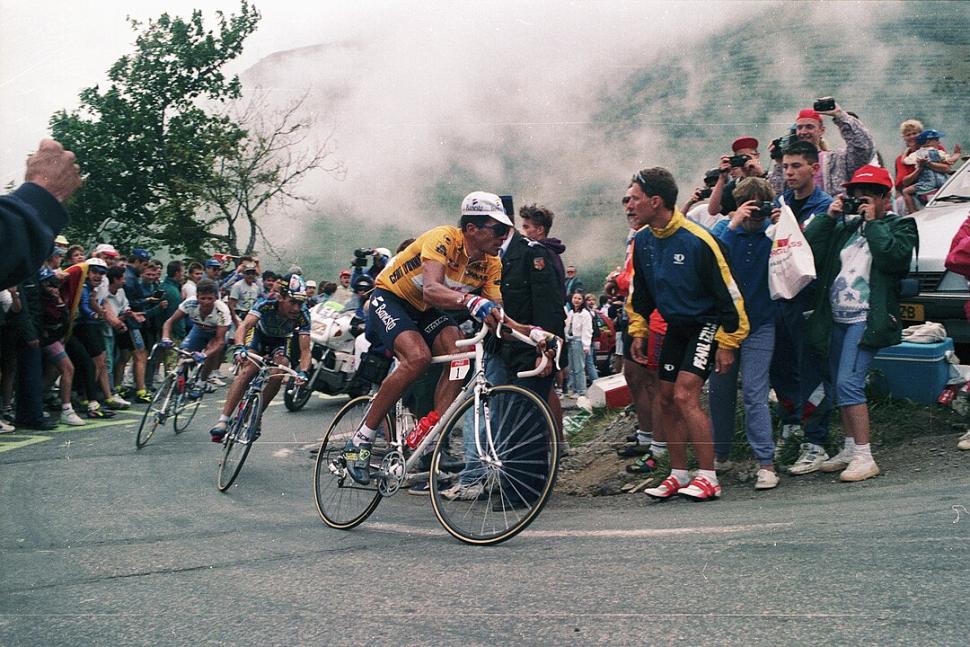
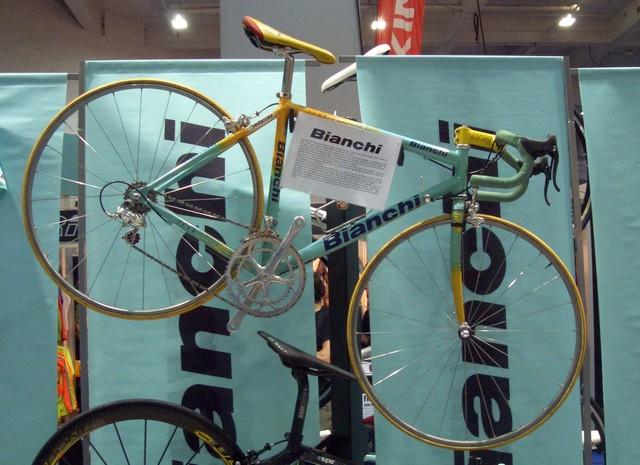

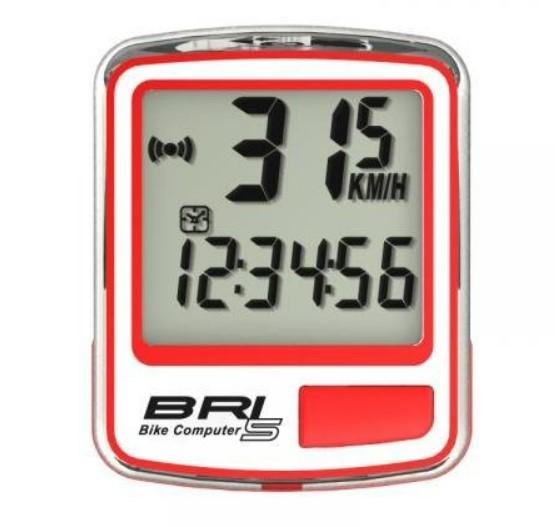
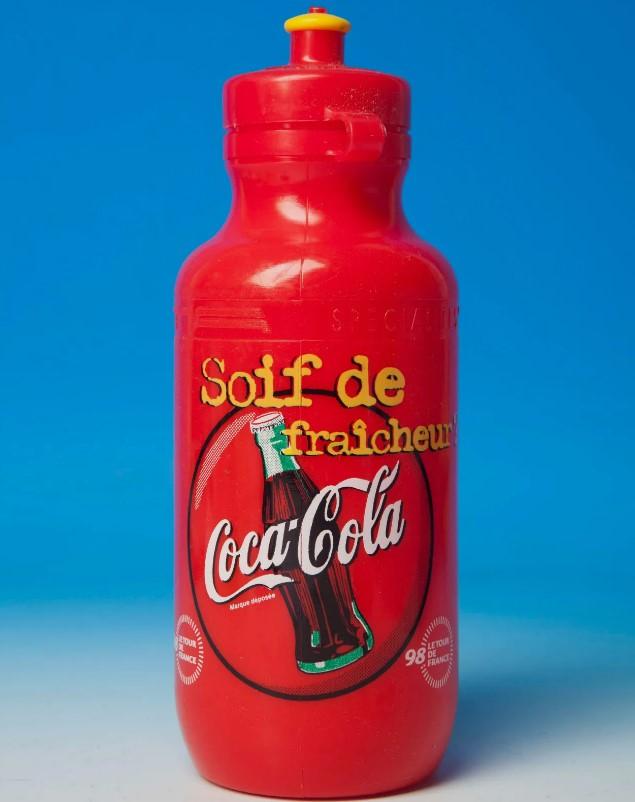

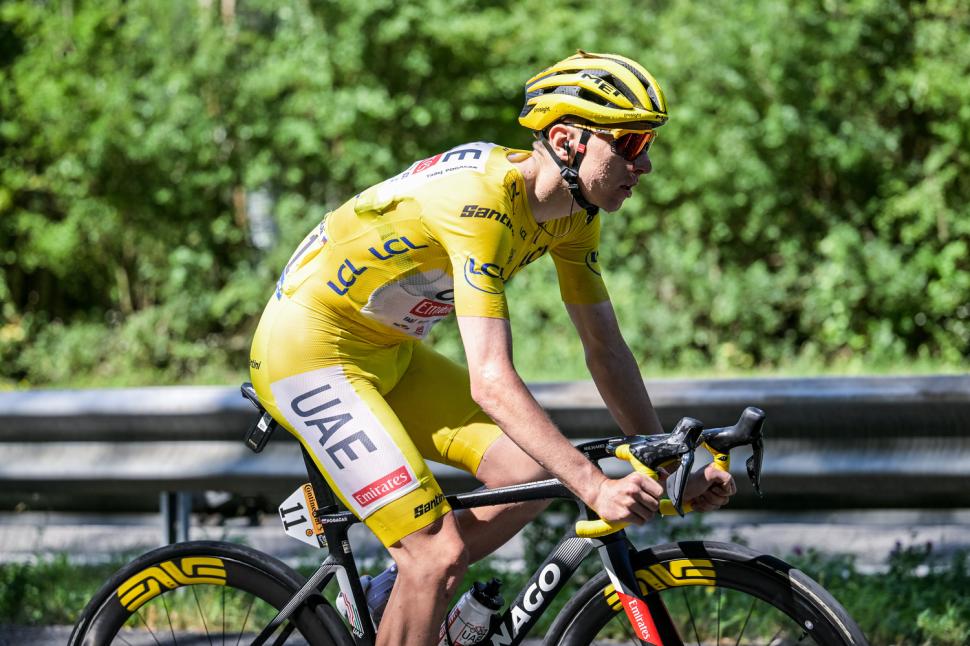
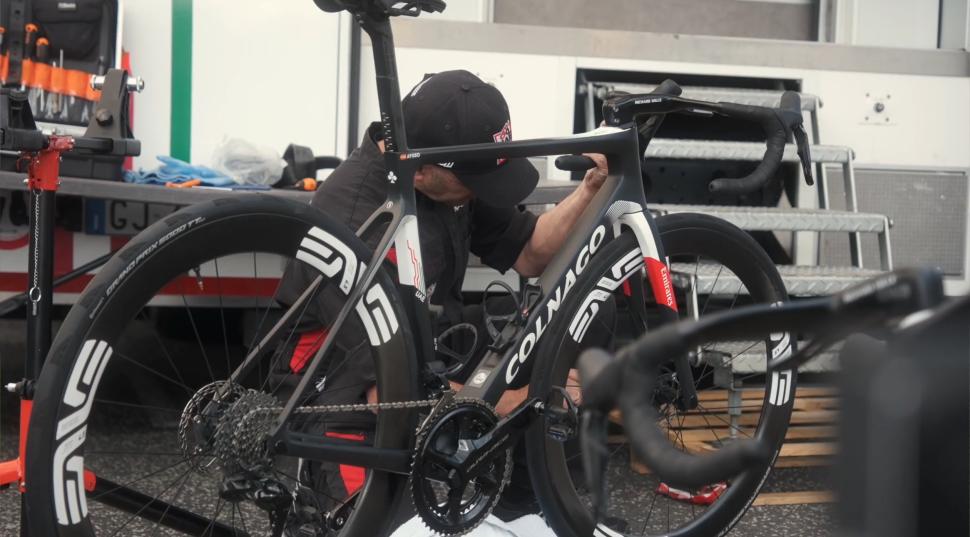
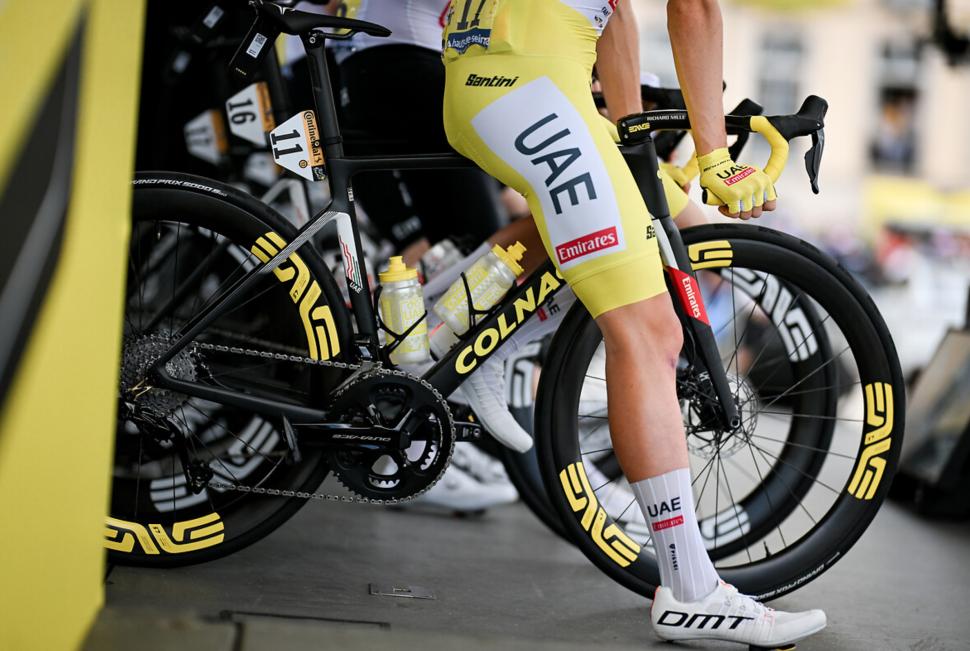
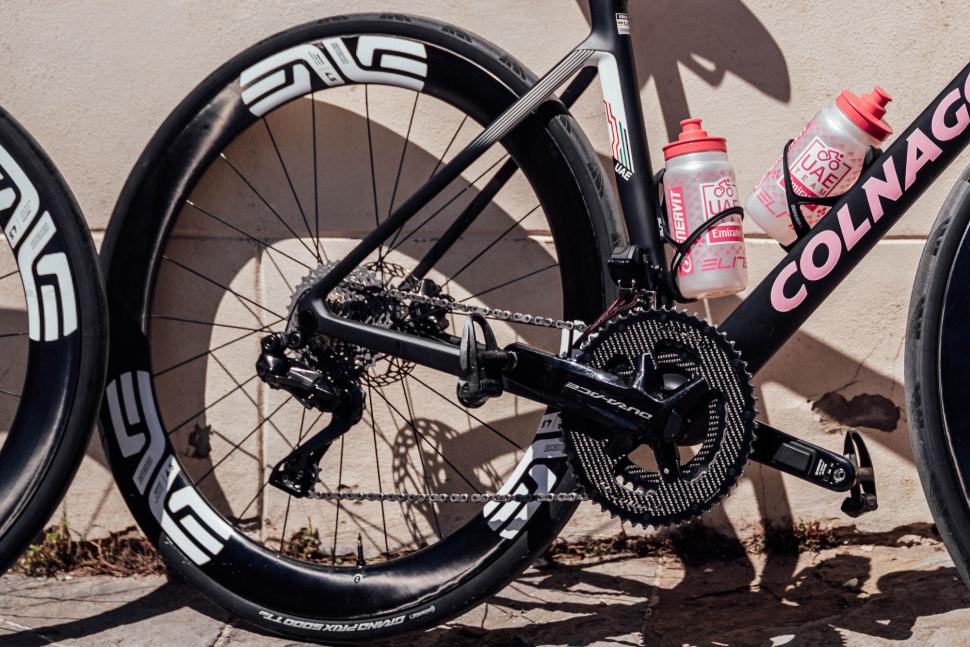

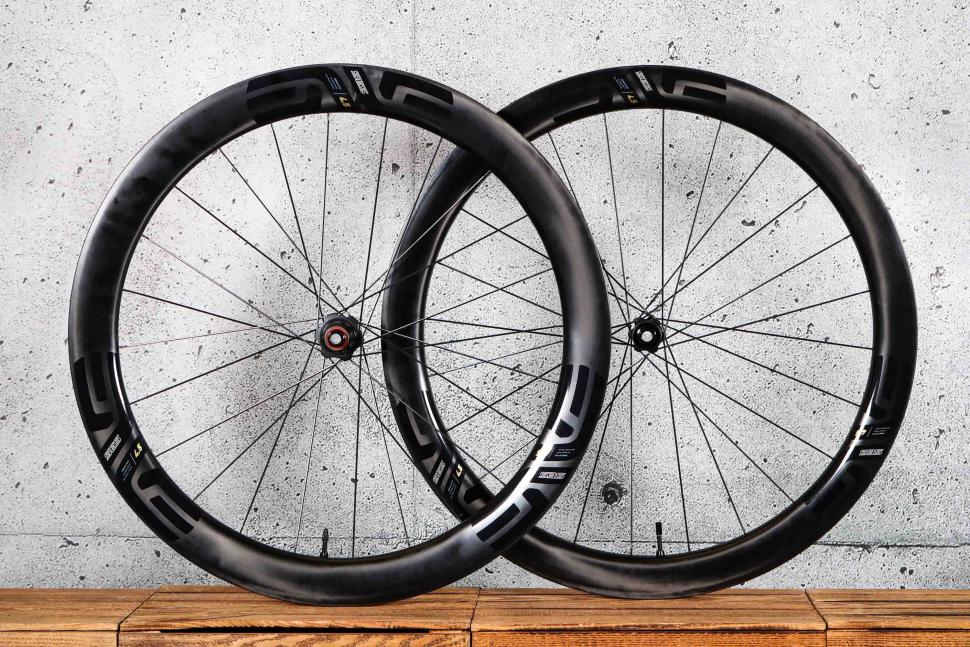
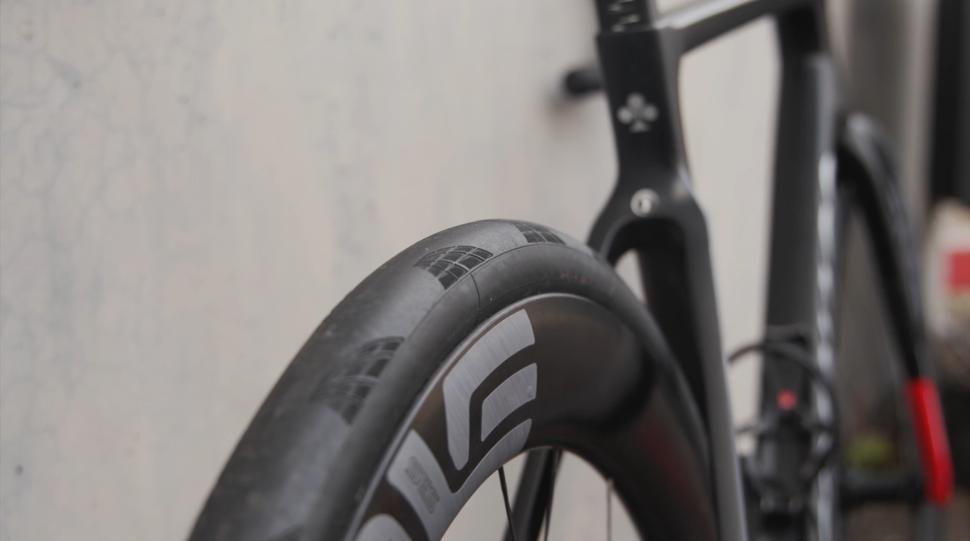
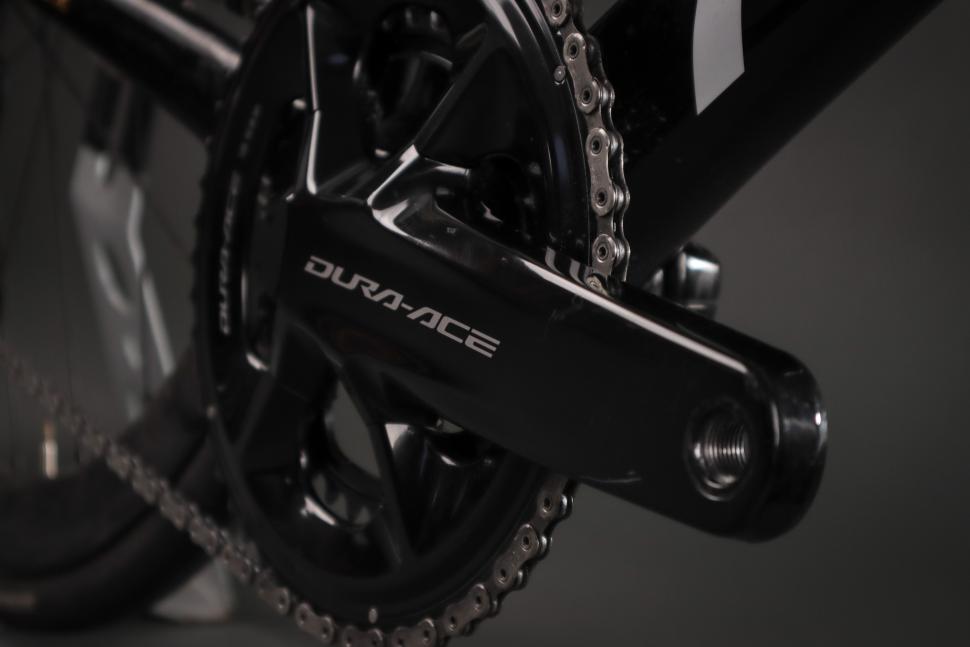

Add new comment
14 comments
"the stoppers that Pantani had to put up with."
I doubt it. The might not have been as good as modern brakes, but they were still very, very good.
And on aluminium rims, which worked much better than most carbon
Impressive pads.
Looking at all those photos from the nineties - when did the Tour organisers start mandating helmets?
UCI was prompted to mandate helmets after the death of Andrei Kivilev in Paris-Nice in 2000 or near enough. There was quite some peloton resistance and for a year or two they were allowed to remove their helmet on climbs but soon enough things settled down to as they are today.
It was Kivilev's death that triggered mandatory helmets but it was a little later, in 2003; it remained permissible to ride helmetless on final climbs over 5km until 2005. The UCI had actually tried to introduce compulsory helmets many years earlier, in the 1991 Paris-Nice, but the riders struck over it and the authorities backed down.
That Bianchi was an absolute classic, right at that time of transition between classic and compact framesets, quill and ahead stems, 1" steerers and 1 1/8" integrated headsets. Such iconic colours, too. I'd rather have one of those than a V4Rs in my stable, though neither is a priority or an aspiration.
I really doubt that a bike say 600 grams lighter or heavier than that of a competitor's should make such a difference in a grand tour. Mathematically, yes of course with all other things being equal- but they arent equal- stiffness, geometry, rider physique etc- and I think it is misleading to suggest (as some novices might interpret this article) that a champion's bike was better because it was lighter- otherwise what is the point of this article ?
Some obvious corrections
Stephen Roche has also done the Giro-Tour double,
Those Campag brakes are dual pivot
54x11 = 132"
'but the last few years have seen them challenged by both clinchers and tubular tyres, and it’s the latter that Pog was riding on yesterday.'
You mean tubeless
That groupset pic is a bit misleading, as it has a C-Record seatpost. And confusingly, Record 10 was single-pivot early on. But yes, I'm pretty sure Marco's 1998 bike had dual pivots.
And the bike hanging up is different still, since it's got carbon-fibre Ergopowers.
If you are using a modern 28 mm tyre, yes, with the 21 mm tyres Pantani was using the overall diameter of the wheel is considerably reduced and makes the 128 inches quoted here correct.
Mmm, let's think...Pantini, Ullrich, Riis...nope, nothing to stop us chatting about their performances without any possible doubts, eh!
I actually owned one of these for a while, about 15 years ago. Unfortunately, my size XL, with Veloce gruppo, was a touch over 7kg. I don't recall it having Italian threads btw.
Even more unfortunately, an argument with an artic gave it custom rear hub spacing, of about 20mm